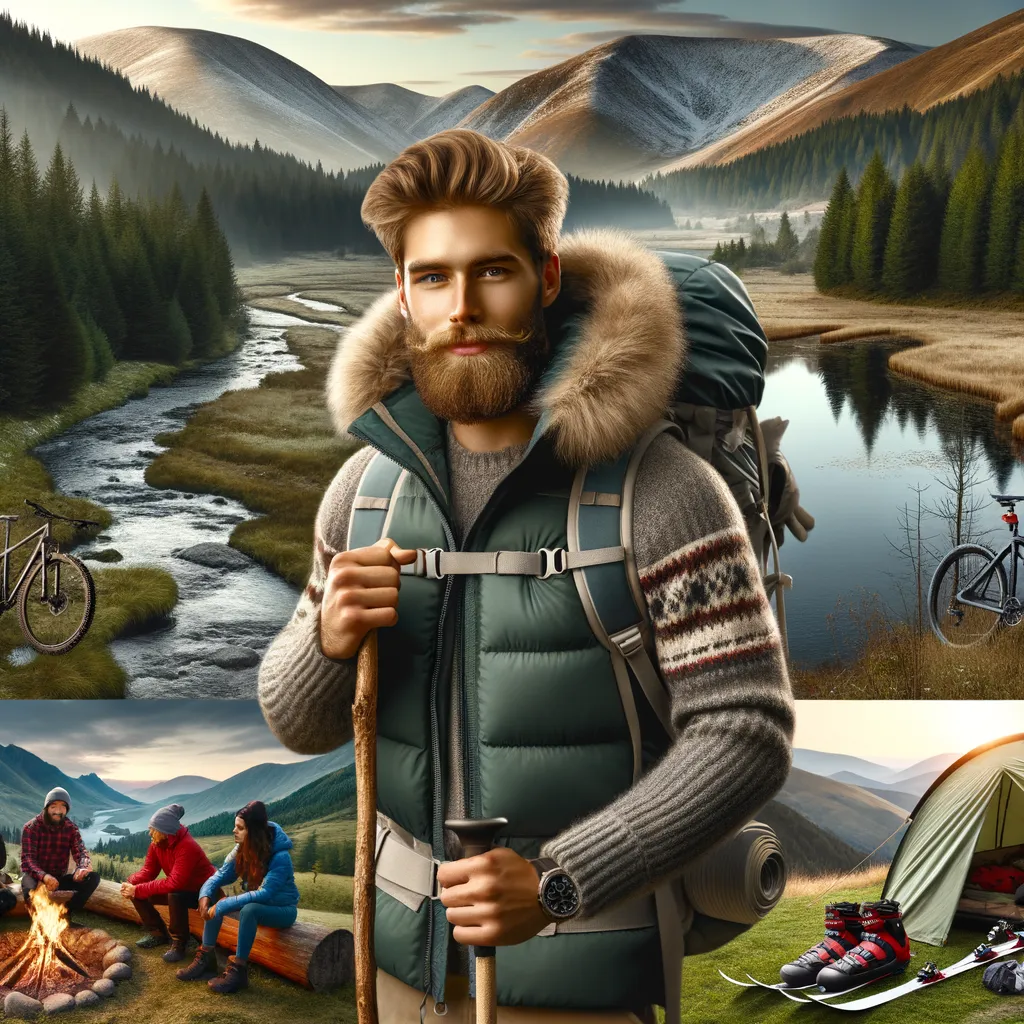The Ultimate Guide to Cold-Weather Gear for Winter Sports Enthusiasts
As the snow begins to fall and the temperatures drop, the excitement among winter sports enthusiasts reaches new heights. Whether you’re a seasoned skier, an avid snowboarder, or someone who simply enjoys the serene beauty of a winter hike, having the right gear is essential for not just comfort, but also safety. This comprehensive guide is designed to help you navigate the wide world of cold-weather gear, ensuring you’re fully prepared for whatever this winter season may throw your way.
Selecting the Right Thermal Wear
At the core of any winter sports attire is effective thermal wear. It’s the first line of defense against the biting cold, and selecting the right materials can make a world of difference. Look for high-quality, moisture-wicking fabrics that keep you dry and comfortable, allowing you to focus on your performance rather than fighting off the chill.
Key Features to Consider:
- Material: Merino wool and synthetic blends offer excellent thermal insulation while keeping moisture away from your skin.
- Fit: Opt for snug-fitting thermal wear that can easily layer under bulkier outer garments without restricting movement.
Essential Outerwear for Every Winter Sport
Your choice of outerwear can be the difference between a day to remember and one you’d rather forget. Jackets and pants specifically designed for winter sports can provide the necessary insulation, flexibility, and waterproofing you need.
Jackets:
A high-quality winter sports jacket should offer not only warmth but also breathability and waterproof features. Look for jackets with adjustable cuffs, taped seams, and a helmet-compatible hood for added versatility and protection.
Pants:
Like jackets, the right pair of winter sports pants should be waterproof and breathable, with added insulation around the core areas. Built-in gaiters and reinforced cuffs can prevent snow from getting inside your boots and help protect against wear from snowboard bindings or skis.
Gloves and Mittens: A Guide to Hand Protection
Your hands are one of the first parts of your body to feel the cold, making it vital to select the right pair of gloves or mittens. While gloves offer better dexterity, mittens can be warmer. Many athletes choose a combination of a thin, moisture-wicking liner under a heavier waterproof glove or mitten for the best of both worlds.
Features to Look For:
- Waterproofing: Essential for keeping your hands dry and warm.
- Insulation: Look for gloves with synthetic or down insulation for warmth.
- Dexterity: If you need to adjust equipment on the go, look for gloves that won’t impede your ability to move your fingers.
Don’t Forget Your Feet: Socks and Boots
The importance of keeping your feet warm and dry cannot be overstated. A good pair of socks can provide insulation while managing moisture, and when paired with the right winter sports boots, you’ll have a solid foundation for your cold-weather adventures.
Socks:
Opt for wool or a wool-synthetic blend for the best warmth and moisture management. Your socks should fit snugly without constricting circulation, which could actually make your feet colder.
Boots:
Whether for skiing, snowboarding, or hiking, the right boots are crucial. Look for waterproof models with thermal insulation, and consider boot fitting at a specialty store to ensure the best performance and comfort.
Preparing for winter sports involves much more than just braving the cold. It’s about enhancing your experience, ensuring your safety, and ultimately making every moment in the great outdoors truly exhilarating. This guide is a starting point, highlighting the essential gear needed for any winter sports enthusiast to thrive in the colder months.

The Ultimate Guide to Cold-Weather Gear for Winter Sports Enthusiasts: What Every Parent Should Know
As the snowflakes decorate our landscapes and the chilly air ushers in the winter season, the thrill and joy of winter sports become a central activity for families across the globe. Equipping your children or teens with the right cold-weather gear is paramount to ensure their safety, comfort, and enjoyment. This comprehensive guide delves into the essentials of winter sports gear, tailored for parents aiming to prepare their young athletes and adventurers for the frosty adventures ahead.
Understanding the Importance of Layering
Mastering the art of layering is crucial for anyone participating in winter sports, especially children, who are more susceptible to the cold. The layering system—comprising of the base layer, mid-layer, and outer layer—allows for flexibility and adaptability to changing weather conditions. Ensuring your child understands and can manage their layers effectively will keep them warm and dry, preventing hypothermia or overheating.
1. Optimal Base Layer Selection
The foundation of good layering begins with the right base layer. This layer is responsible for managing moisture and maintaining the body’s natural temperature. For kids, choosing soft, non-irritating materials like merino wool that are also moisture-wicking, will ensure comfort and warmth. Avoiding cotton, which retains moisture, is a key tip every parent should remember.
2. Mid and Outer Layers: Balancing Warmth and Breathability
The mid layer serves as the primary insulating layer, which should be easy to add or remove based on your child’s thermal comfort. Fleece or lightweight, insulated jackets are ideal. The outer layer protects against wind, rain, and snow. Ensure this layer is waterproof and breathable to prevent moisture from snow from seeping in while allowing sweat to escape.
Choosing Weather-Appropriate Accessories
Don’t overlook the importance of quality accessories like gloves, hats, and scarves. These items safeguard against frostbite and exposure, which are critical for younger enthusiasts who may not be as aware of their body’s cold signals.
3. Protective Gloves and Mittens
Hand protection is a key area where parents should pay close attention. Mittens are typically warmer than gloves and are ideal for younger children who may not require fine motor skills for activities like skiing. For older children engaged in more technical sports, gloves that offer dexterity while maintaining warmth and waterproof qualities are essential.
4. Head and Neck Protection
Most body heat is lost through the head, making hats or helmets (for sports like skiing and snowboarding) critical. A balaclava can also provide face and neck coverage on particularly cold days. Choosing helmet-compatible hats or headgear that covers the ears will enhance warmth and protection.
Footwear Fundamentals: Socks and Boots
Keeping feet warm and dry is nonnegotiable in winter sports. The right socks and boots make all the difference in comfort and performance.
5. Socks and Boots Compatibility
Invest in high-quality wool or synthetic blend socks that manage moisture without too much bulk. Properly fitting boots, whether for skiing, snowboarding, or hiking, should complement these socks, offering waterproof protection, insulation, and support. For many winter sports, specially fitted boots from a reputable outfitter can significantly improve the experience and safety of the young sportsperson.
Finally, remember that preparation extends beyond gear. Educating your child on the signs of frostbite, the importance of staying hydrated, and ensuring they have a buddy system in place when participating in winter sports are all critical components of a safe and enjoyable winter season. By equipping your children with the knowledge and gear outlined in this guide, you’re not just preparing them for the cold; you’re also instilling in them a love for winter sports and the great outdoors. Let the winter adventures begin!
All the things Outdoors you should know. Camping Information
Disclaimer
The articles available via our website provide general information only and we strongly urge readers to exercise caution and conduct their own thorough research and fact-checking. The information presented should not be taken as absolute truth, and, to the maximum extent permitted by law, we will not be held liable for any inaccuracies or errors in the content. It is essential for individuals to independently verify and validate the information before making any decisions or taking any actions based on the articles.


